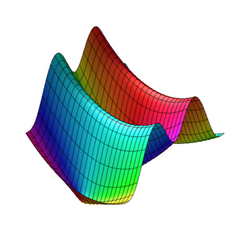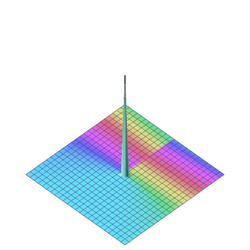Lommel function
From HandWiki


The Lommel differential equation, named after Eugen von Lommel, is an inhomogeneous form of the Bessel differential equation:
Solutions are given by the Lommel functions sμ,ν(z) and Sμ,ν(z), introduced by Eugen von Lommel (1880),
where Jν(z) is a Bessel function of the first kind and Yν(z) a Bessel function of the second kind.
See also
- Anger function
- Lommel polynomial
- Struve function
- Weber function
References
- Erdélyi, Arthur; Magnus, Wilhelm; Oberhettinger, Fritz; Tricomi, Francesco G. (1953), Higher transcendental functions. Vol II, McGraw-Hill Book Company, Inc., New York-Toronto-London, http://apps.nrbook.com/bateman/Vol2.pdf
- Lommel, E. (1875), "Ueber eine mit den Bessel'schen Functionen verwandte Function", Math. Ann. 9 (3): 425–444, doi:10.1007/BF01443342, https://zenodo.org/record/1568162
- Lommel, E. (1880), "Zur Theorie der Bessel'schen Funktionen IV", Math. Ann. 16 (2): 183–208, doi:10.1007/BF01446386
- Paris, R. B. (2010), "Lommel function", in Olver, Frank W. J.; Lozier, Daniel M.; Boisvert, Ronald F. et al., NIST Handbook of Mathematical Functions, Cambridge University Press, ISBN 978-0-521-19225-5, http://dlmf.nist.gov/11.9
- Hazewinkel, Michiel, ed. (2001), "l/l060800", Encyclopedia of Mathematics, Springer Science+Business Media B.V. / Kluwer Academic Publishers, ISBN 978-1-55608-010-4, https://www.encyclopediaofmath.org/index.php?title=l/l060800
External links
- Weisstein, Eric W. "Lommel Differential Equation." From MathWorld—A Wolfram Web Resource.
- Weisstein, Eric W. "Lommel Function." From MathWorld—A Wolfram Web Resource.
 |
